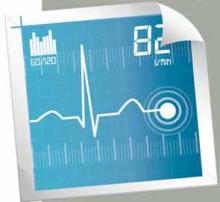User login
In one recently publicized demonstration of data mining’s potential, Austin, Texas-based Seton Healthcare Family used software developed by IBM to pore over doctors’ notes and predict the risk of readmission among patients with congestive heart failure. Among the shortlist of biggest predictors, the analysis pointed to a lack of emotional support and a bulging jugular vein—factors that could be easily identified through inpatient screening but might otherwise be overlooked by staff.
Similarly, New York-Presbyterian Hospital used a system by Microsoft to help reduce the rates of blood clotting in patients through an objective analysis of such risk factors as cancer, smoking, and bed confinement.
In June, Deloitte and Utah-based Intermountain Healthcare announced the launch of OutcomesMiner, an analytics tool that uses electronic health records to ferret out important variations and associations among patient populations. Brett Davis, general manager of Deloitte Health Informatics, says understanding asthma patients who are in different age brackets, have different comorbidities, and are on different drugs, for example, can allow providers to better manage the population. Merely using ICD-9 codes often results in inaccurate patient classifications, he warns. Instead, capturing and analyzing data from medications and clinical encounters can be vital for properly defining an asthma patient and separating the signal from the noise.
In one recently publicized demonstration of data mining’s potential, Austin, Texas-based Seton Healthcare Family used software developed by IBM to pore over doctors’ notes and predict the risk of readmission among patients with congestive heart failure. Among the shortlist of biggest predictors, the analysis pointed to a lack of emotional support and a bulging jugular vein—factors that could be easily identified through inpatient screening but might otherwise be overlooked by staff.
Similarly, New York-Presbyterian Hospital used a system by Microsoft to help reduce the rates of blood clotting in patients through an objective analysis of such risk factors as cancer, smoking, and bed confinement.
In June, Deloitte and Utah-based Intermountain Healthcare announced the launch of OutcomesMiner, an analytics tool that uses electronic health records to ferret out important variations and associations among patient populations. Brett Davis, general manager of Deloitte Health Informatics, says understanding asthma patients who are in different age brackets, have different comorbidities, and are on different drugs, for example, can allow providers to better manage the population. Merely using ICD-9 codes often results in inaccurate patient classifications, he warns. Instead, capturing and analyzing data from medications and clinical encounters can be vital for properly defining an asthma patient and separating the signal from the noise.
In one recently publicized demonstration of data mining’s potential, Austin, Texas-based Seton Healthcare Family used software developed by IBM to pore over doctors’ notes and predict the risk of readmission among patients with congestive heart failure. Among the shortlist of biggest predictors, the analysis pointed to a lack of emotional support and a bulging jugular vein—factors that could be easily identified through inpatient screening but might otherwise be overlooked by staff.
Similarly, New York-Presbyterian Hospital used a system by Microsoft to help reduce the rates of blood clotting in patients through an objective analysis of such risk factors as cancer, smoking, and bed confinement.
In June, Deloitte and Utah-based Intermountain Healthcare announced the launch of OutcomesMiner, an analytics tool that uses electronic health records to ferret out important variations and associations among patient populations. Brett Davis, general manager of Deloitte Health Informatics, says understanding asthma patients who are in different age brackets, have different comorbidities, and are on different drugs, for example, can allow providers to better manage the population. Merely using ICD-9 codes often results in inaccurate patient classifications, he warns. Instead, capturing and analyzing data from medications and clinical encounters can be vital for properly defining an asthma patient and separating the signal from the noise.
